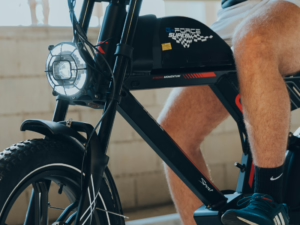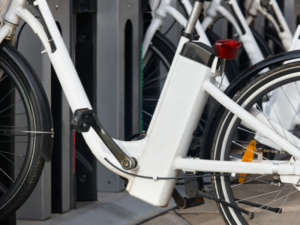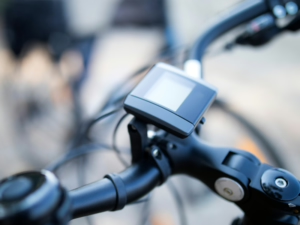E-bikes are a fantastic, eco-friendly way to travel, but even these advanced devices can experience issues, especially with their batteries. If your e-bike battery isn’t charging, the power cuts off unexpectedly, or it’s not performing as it should, knowing how to reset an e-bike battery could be the solution you need. Resetting is an easy and effective way to resolve minor glitches and optimize performance.
In this guide, we’ll walk you through why resetting your e-bike battery is important, how to do it step by step, and tips to maintain your battery for long-lasting performance.
Why Resetting Your E-Bike Battery is Important

Resetting your e-bike battery is an essential maintenance step for fixing common issues and ensuring smooth operation. Here are the top reasons why you should know how to reset your e-bike battery:
1. Fix Charging Problems
Frequent charging errors, overuse, or improper habits can cause your e-bike battery to struggle. Resetting clears temporary software glitches and restores the battery’s charging function.
2. Resolve Power Loss Issues
Unexpected power drops or interruptions during a ride can be frustrating. A reset stabilizes the system and ensures consistent energy output, improving overall battery performance.
3. Clear Error Messages
Many e-bikes display error codes when issues arise, such as overheating or connectivity problems. Resetting often clears these error messages, giving your battery a fresh start.
4. Recalibrate Battery Levels
If your e-bike shows inaccurate battery percentages, resetting helps recalibrate the system, ensuring precise charge readings for better ride planning.
5. Enhance Battery Performance
By resetting, you eliminate minor faults that can reduce efficiency over time, giving your e-bike a “refresh” to ensure longer-lasting power.
How to Reset Your E-Bike Battery in 3 Simple Steps

Resetting your e-bike battery is quick and beginner-friendly. Follow these steps:
Step 1: Turn Off Your E-Bike
Always start by turning off your e-bike to ensure safety. Hold the power button for a few seconds until the system shuts down completely.
Step 2: Disconnect the Battery
- For Removable Batteries: Locate the battery on your e-bike and carefully remove it. Most batteries have a latch or lock mechanism. Once removed, let it sit disconnected for 5-10 minutes to clear any residual energy.
- For Integrated Batteries: If your battery is built into the bike’s frame, leave the bike turned off during this waiting period.
Step 3: Reconnect and Restart
- For Removable Batteries: Reinsert the battery into its compartment, ensuring it locks securely.
- For Integrated Batteries: Turn the e-bike back on after the waiting period.
Press the power button to restart your e-bike. The system should now initialize, resolving any issues you were experiencing.
When to Reset Your E-Bike Battery
You don’t need to reset your battery often, but it can help in the following scenarios:
- The battery isn’t charging properly.
- The power cuts off unexpectedly during rides.
- Error codes persist despite proper charging.
- The battery level indicator shows incorrect readings.
If these problems arise, resetting your battery can restore its functionality and ensure a smoother riding experience.
Additional Tips for E-Bike Battery Care

Resetting your e-bike battery is a quick fix for minor issues, but proper battery maintenance is the key to long-lasting performance and reliability. To ensure you get the most out of your e-bike battery, follow these detailed care tips:
1. Charge Smartly
One of the easiest ways to prolong your battery’s life is to develop smart charging habits. Instead of letting the battery drain completely, recharge it when the power level drops to 20-30%. This prevents “deep discharge,” which can strain lithium-ion cells and reduce their capacity over time.
Additional Tip:
Avoid overcharging. While most modern chargers stop automatically when the battery is full, unplugging the charger after the battery reaches 100% can minimize unnecessary wear on the cells.
2. Avoid Extreme Temperatures
E-bike batteries are sensitive to temperature fluctuations, so it’s important to store and use them in a temperature-friendly environment.
- Hot Weather: Avoid leaving your bike in direct sunlight for extended periods, as excessive heat can degrade the battery’s chemistry and shorten its lifespan.
- Cold Weather: In freezing conditions, the battery may lose efficiency, resulting in reduced range or difficulty charging. When riding in colder weather, warm the battery to room temperature before charging to prevent potential damage.
Additional Tip:
For storage, aim for a temperature range of 10–25°C (50–77°F) to maintain optimal performance. If you live in an area with extreme weather conditions, consider removing the battery from your bike and storing it indoors when not in use.
3. Use the Manufacturer’s Charger
Always stick to the charger provided by the manufacturer, as it’s specifically designed to match your e-bike’s battery specifications. Using third-party or generic chargers can cause uneven charging, overheating, or even damage the battery entirely.
Additional Tip:
If your original charger is lost or damaged, buy a replacement directly from the e-bike manufacturer or an authorized dealer to ensure compatibility and safety.
4. Keep the Battery Clean
Dust and debris can accumulate on the battery terminals, potentially affecting the connection between the battery and the bike. Regular cleaning ensures optimal performance and prevents any buildup that might interfere with charging.
How to Clean Your Battery:
- Turn off your e-bike and remove the battery (if removable).
- Use a soft, dry cloth to gently wipe down the battery case.
- For the terminals, use a slightly damp cloth or an electronics-safe cleaning solution to remove grime.
- Let everything dry completely before reinstalling the battery.
Additional Tip:
Avoid using water directly on the battery, as excessive moisture can seep into the casing and damage internal components.
5. Store Properly During Downtime
If you’re not using your e-bike for an extended period (such as during the off-season), proper storage of the battery is crucial for preserving its health.
- Partially Charged: Lithium-ion batteries should be stored at about 50% charge. Storing a fully drained battery can cause irreversible damage while storing it fully charged for long periods can lead to capacity loss.
- Dry, Cool Location: Remove the battery from the bike and store it in a dry, cool place. Avoid damp areas or garages that experience significant temperature swings.
Additional Tip:
Check the battery’s charge level every 2-3 months during storage. If the charge drops below 20%, recharge it to 50% to prevent deep discharge.
6. Follow a Regular Maintenance Routine
A consistent maintenance routine ensures your e-bike battery stays in peak condition:
- Inspect for physical damage, such as cracks or swelling. If you notice any, stop using the battery and consult a professional.
- Update your e-bike’s firmware, if applicable, to ensure the battery management system (BMS) operates with the latest optimizations.
- Check the connectors and charging port for corrosion, and clean them as needed.
Understanding Different E-Bike Batteries
Knowing your e-bike battery type makes resetting easier:
1. Removable Batteries
Removable batteries are mounted on the bike’s frame and can be detached for charging or resetting. Simply remove the battery, wait a few minutes, and reconnect it to reset.
2. Integrated Batteries
Integrated batteries are built into the frame for a sleeker design. Resetting typically involves turning the bike off and on. For removal, consult your bike’s manual or seek professional assistance if needed.
When to Seek Professional Help
If resetting doesn’t solve the problem, it may indicate a more serious issue, such as:
- Old or Damaged Battery: Batteries naturally degrade over time and may need replacement.
- Wiring Issues: Faulty connections between the battery and motor require expert attention.
- Software Updates: Advanced e-bikes may need occasional firmware updates to resolve system errors.
Visit a certified e-bike repair shop to diagnose and fix these issues.
Final Thoughts
Knowing how to reset an e-bike battery is an important skill for every rider. It’s a straightforward way to address common battery problems like charging errors, power drops, or error codes. Pair this knowledge with good battery care habits, such as avoiding extreme temperatures and always using the right charger, to help your battery last longer.
If a reset doesn’t solve the issue, seek help from a professional. Taking care of your e-bike battery ensures smoother rides and consistent performance for years ahead. For a trusted e-bike battery provider, consider EON Lithium—a reliable choice for high-quality batteries that deliver long-lasting power.



